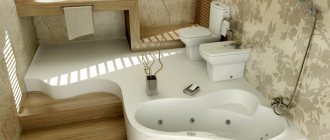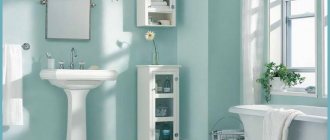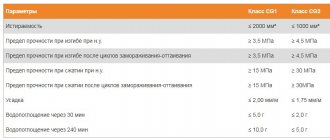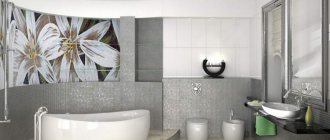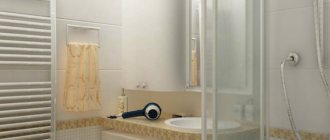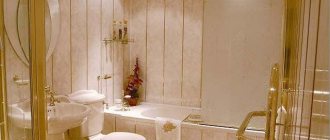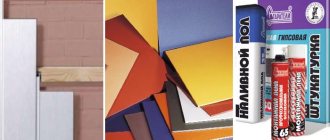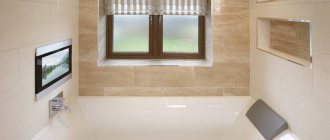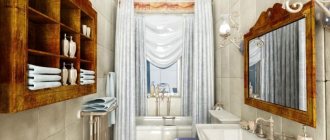We are accustomed to the fact that service premises: bathroom, toilet and kitchen were traditionally covered with ceramic tiles. Today, new compounds are appearing on the construction market that can successfully compete with old materials.
This can be liquid wallpaper for the bathroom and other office premises. When choosing decorative moisture-resistant coatings, you need to pay special attention to service life.
The article describes their composition and raises the question of the appropriateness of use in the bathroom. And also, attention is focused on the preparation of working surfaces and the technology of applying the finished mixture. Information is given on how to choose liquid wallpaper for the toilet, and the pros and cons of the working material are revealed. At the end, traditionally, the results are summed up.
Types and brief performance characteristics of liquid wallpaper
There are many articles on this topic on the Internet, but unfortunately, it is very difficult to find out the truth from them and get practical recommendations. Most articles are written at the request of manufacturers or distributors and are clearly advertising in nature. The second part of the information is provided by amateurs who have not only never worked with liquid wallpaper, but have not even seen how they were used by professionals. Hence the statements “there is nothing complicated”, “everyone can do it”, “universal wallpaper”, “easy and simple to work”, etc. Such statements are very far from the truth; in the article we will only give practical advice from independent users.
Colors and shades of liquid wallpaper
Liquid wallpaper: pros and cons
Let's consider the main advantages of this material:
- Durability. The components of liquid wallpaper are resistant to moisture, temperature changes and environmental influences. The glue will securely adhere the finish to the surface.
- Versatility. This material is suitable for decorating living rooms, bathrooms, offices and commercial premises. They can be applied to any surface: concrete, wood, plaster, drywall, paint or metal.
- Environmentally friendly. The lining contains natural ingredients. Liquid wallpaper allows air to pass through, does not attract dust, does not harbor fungi and mold, and is an excellent heat and sound insulating material.
- Practicality. To apply liquid wallpaper, you do not need to perfectly level the surface. The material will hide all the imperfections of the walls, fill the cracks and even out the unevenness. The wallpaper has no seams, so the surfaces remain smooth after repair.
Advice!
In case of damage, the cladding can be easily repaired; just wet it and remove the damaged area with a spatula. Apply a new layer of wallpaper to this area. Unfortunately, this material has its drawbacks:
- High price. To purchase the required amount of liquid wallpaper, you will have to pay 2-3 times more than for traditional wallpaper in rolls.
- Wash off with water. If the owners are fans of cleanliness and like to wash everything, then liquid wallpaper is not for them. Rubbing with a wet cloth will quickly wash them off. You can resort to covering the wallpaper with transparent varnish, but then the walls will stop “breathing.” It is best to remove a heavily contaminated area and replace it with a new one.
- Labor-intensive application process. You always want to finish your apartment renovation as soon as possible. But in order not to do it often, it is still worth spending time and effort on preparing surfaces, as well as gluing wallpaper. You need to be prepared for the fact that the liquid coating takes a long time to dry.
Composition of liquid wallpaper
During the manufacture of liquid wallpaper, the following components are used.
| Name | Composition and purpose |
| Base | Cellulose and cotton fibers. They occupy up to 90% of the total mass and serve as the main basis. Wood processing industry waste and waste paper processing materials are used. To obtain cotton fiber, textile waste is processed. |
| Decorative additives | Various sparkles, silk artificial fiber, dyes. Purpose – imparting decorative properties to surfaces. |
| Adhesives | PVA, Bustilat, KSM and other cheap compounds. The purpose is to bind the constituent elements into a durable coating. |
| Additional components | Cellulose is an excellent nutrient medium for fungi and microorganisms. In this regard, special antiseptic preparations are added to some types of liquid wallpaper to prevent the appearance of fungi. |
Fillers
As can be seen from the table, waste from various industries and the cheapest adhesives are used to produce liquid wallpaper. Question. Why are they so expensive? Answer. The advertisement is engine of the trade.
Composition of liquid wallpaper
liquid wallpaper
What kind of material is this?
This is one of the new products of modern trends, characterized by high performance and attractive appearance.
Developers who chose liquid wallpaper as a bathroom decoration were able to fully appreciate the versatile qualities of the material.
The decor gives the walls individuality while maintaining a presentable appearance. The material does not swell due to the negative effects of humidity, does not peel off from the surface, and does not require constant repair, which gives it additional benefits.
Moisture-resistant wallpaper is in demand, easy to clean, does not cause difficulties in care, and can be washed with plain water using simple household products.
Objective performance characteristics of liquid wallpaper
We will compare the advertising positive aspects of the material with practical characteristics. This information will help you decide on the advisability of using liquid wallpaper for wall decoration in the bathroom.
| What does the advertisement say? | What practice shows |
To apply liquid wallpaper there is no need to specially prepare the surface; it hides all unevenness | The thickness of the liquid wallpaper layer is 2–3 mm (not 5 or more!). This means that the walls cannot have irregularities exceeding these values. Wallpaper should be applied to flat surfaces in a thin layer. A thick layer of wallpaper will not only be expensive, but will also not adhere to the surface. Under slight mechanical loads, it will begin to peel off and inevitably fall off completely. |
To carry out work, small areas of workspace are required | This is true. Tools and containers for liquid wallpaper do not require much space. To work, you will need a small basin or bucket and ordinary grout with a handle. |
Complete absence of joints; work can be suspended at any stage and continued after a few days. Joint seams will not be noticeable | Partially true. Indeed, work can be stopped at any time for several days. The prepared mixture will not lose its original properties; it only needs to be covered with film to prevent drying out. If during this time a little moisture is lost, it doesn’t matter, you can add water and mix everything thoroughly. As for the seams, that's not true. They will be inconspicuous, but an experienced master will always see the junction point. No amount of soaking will help for two reasons. The first is that the surface of the wallpaper is rough, and a wet coating will always be a little harder than the new one. It will never be possible to apply a new liquid over the entire joint area to a hard, rough wall; air pockets will remain, albeit small ones. The thin edge of the joint will be slightly different in color; it will not mix with the old wallpaper, but will lie on top. This is a proven practice, do not double-check it with your own experience. Do you need to stop working urgently? Make the border as smooth as possible. |
Liquid wallpaper “breathes” | It's true, cellulose allows air and steam to pass through without problems. The only question is, do bathroom walls need steam? |
They have excellent sound-absorbing and heat-saving properties | If the layer thickness is at least a centimeter, then, if desired, you can notice a slight effect. And with a thickness of 1.5–2 mm, you need to have very precise instruments to record “high” sound-absorbing and heat-saving properties. Since wallpaper is applied in a thin layer, you should not hope that after finishing the walls in the bathroom it will become much warmer and quieter. |
The surface is easy to repair | Yes, it is easy to repair, but marks will always be visible. The new coating looks like a clean spot on the old one. |
Reusability | After removing the wallpaper from the walls, you can apply it again. You just need to keep in mind that the original design appearance will not be restored. |
Ease of care | Blatant untruth. Wallpaper cannot be cleaned with a sponge or rag, only with a vacuum cleaner. There is little dust in the bathroom, but mold appears on damp walls; it cannot be cleaned with a vacuum cleaner. But there are also problems with it - the brush is difficult to move along the wall, it constantly clings to emerging irregularities. In addition, there is a high probability of mechanical damage to the surface. |
These are the differences between advertising brochures and practical user reviews. Now it’s up to you to decide whether to use liquid wallpaper for rooms with high humidity and temperature.
Advice from professionals. Never apply liquid wallpaper to walls that have direct contact with water: directly next to the bathtub or shower stall.
Material improvement
The very first liquid wallpaper was imperfect. The material actively absorbed moisture and was not suitable for use in bathrooms. To achieve the required moisture resistance in rooms with high humidity, it was recommended to cover liquid wallpaper with a layer of varnish. In this case, the walls stopped “breathing.”
The most modern developments of this material make it possible to skip this action. The walls become absolutely impervious to hot steam and splashes. Mirrors will not fog up during bath procedures, and wooden furniture will be saved from temperature changes. Antifungal treatment of the wall surface may be unnecessary, since the solution contains fungicides.
All of the above properties make liquid wallpaper a very attractive material for wall decoration. When finished, the wall will look like it is tightly covered with fabric.
Is it possible to make liquid wallpaper for the bathroom yourself?
The question is of interest to some particularly thrifty developers; you can find advice on this matter on the Internet. Take paper or cotton cloth and cut it finely with scissors. Buy PVA glue, dyes and glitter at the store, soak everything in water and mix. The result is that you will get almost free liquid wallpaper for your bathroom. Everything is simple and excellent.
Preparation of composition for liquid wallpaper
Let's look at this technology from a practical perspective. Let's say you need to plaster a small wall with an area of approximately 10 m2. For one meter, at least 300 g of dry material is required, for the entire wall, respectively, at least 3 kg. Weigh a 3 kg stack of paper and note its volume. Estimate the time you need to spend cutting it, and the size of one piece should not exceed a few millimeters. Lost the desire to cut? If not, then one more fact. For liquid wallpaper, only clean, thin and soft paper such as newsprint is suitable. Glossy magazines are not suitable, their paper does not absorb moisture, and therefore the cellulose will not dissolve. But newspaper cannot be used for two reasons. The first is that printing ink is unsafe for health. Secondly, black paint will make the wallpaper dark, why do you need such a bathroom? Conclusion - go to the store and buy ready-made products, don’t waste your time.
It is better not to use newspapers and waste paper to make liquid wallpaper.
Premises requirements
Not every bathroom can be decorated with silk plaster. It was already mentioned above that a small bathroom can “accept” silk finishing only in a small area. Therefore, it is wiser to use it in large areas. In a fairly large room, the abrasive effect on the walls, compared to a small room, is minimal, which means the wallpaper will be more intact.
To create “comfortable” conditions even for moisture-resistant liquid wallpaper, the bathroom must have normal ventilation. Then water vapor will not stagnate in the room. And the coating can easily be freed from the moisture it has absorbed, and as a result, it will last longer.
In order for the coating not to get wet from moisture coming from the walls themselves, it is necessary that it does not get into the walls either from above or from below. To do this, during construction, reliable waterproofing of the walls from the foundation and the overlying floor is provided.
How to calculate the consumption of liquid wallpaper
Study the instructions for use; depending on the specific type, the consumption of dry wallpaper per square meter of surface area is indicated; it can range from 250 g to 350 g. But under one condition - the wallpaper is applied to perfectly smooth walls, the thickness is the same over the entire surface and does not exceed 2 mm. This means that the walls cannot have any flaws, and the work will be done by an experienced professional. Moreover, he should have experience working with liquid wallpaper, and not cement-sand plasters or putties. Your wall is uneven, and you have very little or no experience - increase the amount by at least 20%. If there is some material left, it will always be useful for correcting problem areas.
Liquid wallpaper consumption
How to calculate the consumption of liquid wallpaper
Liquid wallpaper compared to washable wallpaper
- Long service life
- Harmless to living organisms
- Resistance to sunlight
- Elasticity of the material
- Sound and heat insulation of the room
- Antistatic and does not absorb odors
- Maintainability
- Moisture resistance
- Versatility and practicality
Read about all the advantages of liquid wallpaper.
Application technology
We have already mentioned that working with liquid wallpaper requires specific skills. If you don’t have them, then it’s better to fill your hand a little on an inconspicuous area of the wall. Then the wallpaper can be removed, mixed with a large amount of prepared and reused. Don’t be discouraged if it doesn’t work right away, practice, try holding the ironing board at different angles, press it harder or weaker against the wall. Try working at different intensities. Let the area dry and choose a technology, how best to join the old and new coating, how to align the joints and make them less noticeable.
We recommend practicing applying liquid wallpaper
Now that you have some practical knowledge, start plastering the walls in the bathroom. We have already mentioned that only those surfaces that are not exposed to water during water procedures can be finished. In addition, it is strongly recommended to make an edging at the bottom of the wall to protect the liquid wallpaper from contamination while cleaning the floor.
Step 1. Take the dimensions of the surfaces to be coated and determine their area. Buy materials taking into account the stock. When working with liquid wallpaper, you need to use a smoothing iron; it makes no difference what material it is made of. The size of the trowel depends on the experience of the worker. The larger it is, the smoother the coating is, but the more difficult it is to work with. It takes quite a lot of experience. For beginners, we recommend buying a tool measuring approximately 10x20 cm.
Transparent trowel-trowel - the most convenient tool
Step 2 . Prepare the material according to the manufacturers' recommendations. Be sure to consider the advice of professionals. Mix at least three packets at a time; the more, the more even the coating will be.
Preparing liquid wallpaper
Step 3. Clean the surfaces from dust and dirt and check their condition. To do this, use an even-length staff or level. It is advisable to level out large recesses of more than 3 mm with putty; this will make working with liquid wallpaper much easier and improve the quality of the coating.
Preparing walls for liquid wallpaper
Why do we recommend leveling the surface?
- On smooth surfaces, material consumption is reduced; the cost of putty is much less than the cost of wallpaper.
- Leveling recesses with putty is much easier to do than with liquid wallpaper. Marks from the edges of the spatula are removed with a slightly damp sponge using careful circular movements. This technology is not suitable for liquid wallpaper. You need to have either a very wide grout and great practical skills. Beginners will not be able to work with large grout, and there are no practical skills. Don't think that plastering a few square meters of wall makes you a professional. In order to really understand something, you need to work for more than one year.
Leveling problem areas
Step 4. Be sure to apply two layers of primer to the wall surface. Drying time for each is approximately three to four hours. The primer is applied with a roller or brush, the second layer in a transverse direction to the first. Do not leave any gaps; rub it firmly into the surface. Prime the corners of the room especially carefully. It is in these places that it is most difficult to apply liquid wallpaper so that it does not peel off; all possible measures must be taken to prevent such phenomena.
Prime the walls
Step 5. Start plastering the walls. This can be done in two ways, you can try both and use the one that is more convenient. We will tell you both methods, and you choose the best one for yourself.
First way
Most beginners use it. The mass is applied to one side of the trowel, do not take too much or too little, determine the specific amount experimentally. Tilt the float at an angle of approximately 10°–15° to the plane of the wall. The hand should move at an average pace and without stopping until all the liquid wallpaper remains on the wall. The tilt of the smoother must be constantly reduced, otherwise the wallpaper will not press against the wall surface. We remind you once again that no theoretical knowledge can replace practical skills. Each sentence you read needs to be reinforced with practical actions, and you should immediately try to work with liquid wallpaper.
Application of liquid wallpaper
As soon as all the mass from the trowel has transferred to the wall, gradually move the tool away from the wall. Place a new portion of material and repeat the operation. Step back approximately 2-3 centimeters from the end of the first section, press the trowel down and apply the wallpaper. Try to immediately level the marks from the edges of the tool, return to the already covered areas and try to even out the marks with careful circular movements.
How to glue liquid wallpaper
Stages of applying liquid wallpaper to walls
There is no need to achieve perfect smoothness; after drying, the tubercles will become less noticeable. This is one of the positive properties of liquid wallpaper. We will tell you how to finish external and internal corners in the article below; the technique differs from the production of plastering work with cement mixtures.
Second way
This is how professionals work; you need to have experience in ordinary plastering of walls. By the way, liquid wallpaper is in many ways reminiscent of plaster, with differences in composition and physical characteristics. If you learn to work professionally, you can cover 20 m2 or more surfaces with liquid wallpaper in one day.
What is the difference between the professional method? The wallpaper is first thrown onto the wall with a trowel, and then smoothed with a long trowel. The throwing technology is somewhat different from the usual one. If for cement mortars you need to throw a thickness of at least one centimeter, and each throw of mass should lie next to the previous one, then with liquid wallpaper you should act differently. They need to be stretched as much as possible across the surface during the throw; the hand with the trowel should simultaneously move perpendicularly and parallel to the wall. Free space should be left between adjacent slats; it will be filled during the final leveling of the coating with a trowel. Practice shows with what effort and from what distance to throw, each individual case has its own nuances, it is even theoretically impossible to describe everything. If the work is done correctly, there will be no splashes; the material adheres tightly to the surface in an almost uniform layer. Leveling with a trowel takes a few minutes and is done in a couple of passes.
Applying liquid wallpaper to the wall
Important. Tools must be made of stainless steel or plastic, their working surfaces must be absolutely clean and smooth.
Step 6 : Keep track of the time. A long break can only be taken when work on the entire surface is completed. We have already said above that it is very difficult to make the joining of a fresh section with a frozen one unnoticeable. Estimate the start and end times of work taking this factor into account. There will be a break of more than several hours - close the container tightly and do not allow the prepared mixture to dry out.
How to trim external and internal corners
There are no rooms without internal and external corners; covering them with liquid wallpaper is somewhat more difficult than plastering them. Why, and how to do it correctly? Let's look at this issue in detail. To understand the difference in technology, you need to familiarize yourself with both.
Before plastering the external corners with cement mixtures, a flat board, aluminum or metal lath is fixed to one of the planes. They are fastened with homemade fasteners (brackets) from building reinforcement with a diameter of approximately 5–10 mm or with purchased devices. The board is installed tightly to one of the planes of the corner, above the second plane the edge protrudes to the thickness of the plaster. Everything is done to a level strictly vertically. Everything else is simple. One wall is being plastered, the fixed board plays the role of an outer beacon. The solution has hardened - the board is removed and the second plane of the corner is plastered. Now the new outermost beacon will be a layer of hardened plaster. Thanks to this technology, it is possible to obtain a perfectly even angle. This method is not suitable for liquid wallpaper for several reasons.
- The thickness of the liquid wallpaper layer is only a few millimeters, which does not allow you to adjust the required parameters using the side slats.
- The material has low hardness and cannot serve as a beacon for the second plane.
Finishing corners
Due to such features, it is necessary to change the technology for finishing external corners.
Step 1. Start work from the bottom of the corner. Apply liquid wallpaper on one side to a height of approximately 20 cm. The material should protrude a few millimeters above the corner.
Step 2. Apply wallpaper to the same height on the other side of the corner. If the joints fall off, correct them and press them firmly into the wall surface.
Step 3. Very carefully use a spatula to correct the angle on both sides; you will have to do this operation several times. Move the spatula only in the vertical direction; horizontal movements are made as a last resort and only when large corrections need to be made.
Important. Do not allow the thickness of the coating to increase; the corners are the weakest point. A thick layer of liquid wallpaper will fall off faster and you will have to make unplanned repairs.
Internal corners are easier to make. The spatula can be moved both horizontally and vertically, which greatly facilitates the process.
Finishing the inner corner
It is advisable to start applying the composition from a light corner towards a dark one.
Wall decoration with liquid wallpaper
How to make patterns on the wall
Due to the patterns, the appearance of the walls significantly improves; if you have the time and desire, then take up additional decorations. Patterns can be flat or three-dimensional; we will tell you the technology for applying two types.
Step 1. Select a pattern and purchase different colors to match it. There is no need to calculate the exact quantity; you will still have to buy at least one package of each shade, and this is enough to finish 3 m2 of area. Of course, if you have simple geometric patterns over a large area, then find out the amount of materials more accurately.
Important. Be sure to saturate the surface with a high-quality primer. The drawings will have many lines of contact of different colors; they are done in two steps. And this technology reduces the bonding strength of the edges.
Step 2 . Draw a picture on the wall. We don’t recommend choosing a complex multi-color one right away; start with a two-color one. The drawing is applied in several ways.
First. It is drawn immediately on the wall. This method is suitable for those who have natural drawing abilities. Or if you have a geometric pattern consisting only of straight lines. Make markings, mark the break points of the lines and draw a pattern with a ruler.
Marking the pattern
Practical advice. It is advisable to use an ordinary pencil, not a felt-tip pen. The line does not disappear when wet with liquid wallpaper, the paint does not get onto the front surface, and does not show through under the light coating.
Second. If you have difficulty drawing, you can transfer the image to a sheet of thick paper and cut out a stencil. Glue it to the wall with construction tape.
Paper stencil
The third way is to remember how they “interrupted” drawings during their student years. The drawing was laid out on glass, a table lamp under it, a blank sheet of Whatman paper on top, and a drawing was quickly drawn along the translucent lines. Everything is the same, only the shadow of the drawing should fall on the wall. Trace it with a pencil and the preparatory process is complete.
Step 3. If you have a complex drawing or little experience in performing such work, then it is better to cover the outline with masking tape. Use short pieces, cut along the lines. The work is long, but it pays off during the application of liquid wallpaper. You can also mark simple lines with tape; the pattern will be much clearer.
Step 4. Prepare liquid wallpaper of the same color, as we have already described. To work, you need to have two spatulas (large and small); the tool must be clean and have smooth surfaces.
Step 5 . After the outline on the wall is drawn, proceed to applying wallpaper. Apply only one color at first. Work carefully, constantly adjust the wallpaper with the back of the spatula, it should not go beyond the outline of the pattern. If the tape is glued, the work is easier. The layer thickness is standard, approximately 2 mm. Freshly applied wallpaper of different colors should never touch each other, otherwise the dividing lines will be blurred.
Gradually fill in all the elements of the picture
Step 6: Allow time for the first color to dry completely. This will require at least two days, the specific values depend on the room temperature and ventilation efficiency.
Step 7. The first color has dried - start gluing wallpaper of a different color. Take special care at joints. Immediately remove excess wallpaper, do not allow the previous layer to get wet.
Fine detailing, thin lines are drawn using felt-tip pens
Liquid wallpaper can also be used to create three-dimensional designs. To do this, you need to make some of the material somewhat thicker while soaking the material. Fill the picture with more liquid wallpaper using the described method. While they are wet, glue the convex parts to them. Form a shape from thick material and glue it to the wall. First, press firmly over the entire surface of the protruding part, and then trim the edges. On convex surfaces, the end of a small spatula can be used to press out lines, leaf curves, etc. Don’t be afraid to experiment, in any case you will get a completely exclusive finish.
Volumetric drawing
Another original way to apply a pattern to wallpaper in the bathroom. Find a thematic picture, make a stencil on its base, place it against the wall and paint the cut holes with water-based paint. At the same time, you need to remember that the surface of liquid wallpaper is embossed, you won’t get straight lines. Choose appropriate pictures.
Drawings with liquid wallpaper
Surface preparation
Carry out the preparation carefully; the adhesion strength of the finishing layer to the building structures will depend on this. You need to start work by clearing the old coating. Don't leave any loose pieces - anything that comes off must be removed. Pull out nails and other objects sticking out of the walls.
Liquid wallpaper does not require a perfectly smooth base. This doesn't mean you can leave deep potholes. Seal all holes with cement mortar. Knock down the protrusions if possible.
After cleaning the surface of previous finishing materials, apply a primer. After drying, cover the entire area with water-repellent varnish. Parts made of plasterboard and wood need to be puttied and painted with water-based emulsion, which will protect them from getting wet. For metal pipes and boxes, all joints and cracks should be sealed with sickle tape, the surface should be completely puttyed and alkyd enamel should be applied.
Advice
If the base is painted in different colors, the shade of the wallpaper may be uneven. Try to bring all structures to the same tone using putty, primer and painting.
How to remove liquid wallpaper
It's not as simple as it seems. To prepare liquid wallpaper per kilogram of dry mixture you will need at least three liters of water; this composition covers 3–4 m2 of surface. This means that to get completely wet you need about the same amount of water, and you need to apply it in one go. It is not recommended to use a roller; it will not be able to absorb so much water at one time. You will have to process the same place several times. During this time, the top layer will already get wet, become soft and begin to stick to the roller. This is a big problem. To remove liquid wallpaper, you need to wet it with a large amount of water and without direct contact of the tool with the wall surface. The best option is a pneumatic spray gun. But not everyone has it.
Device for humidifying wallpaper with steam
How to decorate paper plaster
Sequins
Modern wallpapers have a textured surface and different patterns. Wallpaper with glitter looks especially attractive. Reflective particles make the interior light and shining, especially in natural light. Glitter for liquid wallpaper will help focus attention in a certain area, for example, on the far wall or on the ceiling.
Gloss in the mixture
Stencils
Stencils will help you create unusual patterns on the walls. With their help, even a novice master can make a real painting. Multicolor compositions look especially original. To apply a mixture of different colors, you will need to make several templates. Using stencils for liquid wallpaper, three-dimensional compositions are also created. To do this, the mixture is applied to the base coating through a template in several layers, achieving the creation of a three-dimensional figure.
Using a stencil
Related article:
DIY stencils for decor: templates and techniques for making them. From the article you will learn what stencil designs are, what they are needed for, pros and cons, examples of decorating furniture and mirrors, and you will also find templates for downloading.
Varnish and paint
Using varnish for liquid wallpaper is a common technique. It allows you to protect the coating from moisture and make it more resistant to mechanical damage. In addition, the varnish will help the coating retain its original color for a long time. Acrylic varnish is added directly to the mixture or applied over it after drying.
It is worth considering that adding varnish will significantly complicate the process of removing wallpaper from the wall in the future.
Advice! If liquid wallpaper is applied in a thin layer, the varnish can make it transparent, which is not always good. To prevent this from happening, after application the wallpaper is first coated with a transparent primer, and only then with varnish.
Is it possible to paint liquid wallpaper? Can! But keep in mind that too thick a layer of water-based or acrylic paint can cause the material to peel off the walls. Therefore, before painting, treat the paper plaster with primer.
We have already talked about whether it is possible to glue wallpaper to liquid wallpaper. It's possible, but not necessary. But if the situation is hopeless for some reason, for example, your beloved mother-in-law comes, and her rider includes walls with green birch wallpaper, try it. Preliminarily inspect the old coating for peeling, treat it with primer and glue it after complete drying. It will take a couple of days to do everything, and you will still have time to hang Yesenin’s portrait and euthanize the cat before your guest arrives.
Answers to some questions
Can liquid wallpaper withstand shrinkage at home? It all depends on its intensity. If the shrinkage is a few millimeters, then there will be no problems. If the count is in centimeters, then the liquid wallpaper will become deformed or peel off.
Are there simpler wall covering technologies? Yes, you can use a pneumatic spray gun. To do this, several conditions must be met: the nozzle diameter is at least four millimeters, the size of the wallpaper fractions does not exceed these values, and the air pressure is at least five atmospheres.
Application of liquid wallpaper with a sprayer
Is it possible to level surfaces with an ordinary roller? No, you can’t, leveling the surfaces of liquid wallpaper should only be done with smooth, even tools. As you might guess, the surface of the rollers does not meet these requirements.
Apply wallpaper with a spatula
How does primer help? It not only increases the adhesion coefficient, which is also very important. The primer prevents dyes from getting from the wall onto the wallpaper, and they appear on the surface in the form of various stains. In addition, white primers make the base a uniform color, which is essential for surfaces. The thickness of liquid wallpaper is up to two millimeters, in some places it can decrease to a millimeter. Such a thin layer is translucent, and multi-colored sections of the wall will be visible through it.
White wallpaper primer
Is it necessary to follow manufacturers' recommendations for choosing a specific brand of primer? Yes, if you have no experience. Only professionals can choose from a huge variety of materials with identical performance properties at a lower price. One more nuance - you need to pay attention to the properties of primers; some can only improve adhesion, others prevent the surface from getting wet, and others have antiseptic properties. There are complex action primers. To give surfaces the same tone, they need to be painted with dispersion paints. They have high adhesion rates with many finishing materials and liquid wallpaper.
Primer for wallpaper
Is it possible to apply wallpaper to OSB boards? It's possible, but difficult. First, you need to apply at least two layers of waterproof primer to the slab; before applying the next one, the previous one must be completely dry, which takes about 7–8 hours. Next, the surface should be made monochromatic - painted with white water-based paint and again given time to dry. The same should be done if the surface to be finished is covered with plywood.
Can liquid wallpaper be applied to decorative plaster? If you really want to, then you can. But before application, it should be leveled with putty, primed twice and painted with white paint. Now decide whether this type of bathroom decoration is worth it. Moreover, decorative plaster, unlike liquid wallpaper, is not afraid of direct contact with water.
Liquid wallpaper in the bathroom. Combination with mosaic
How is liquid wallpaper applied to partitions made of aerated concrete blocks? Very difficult to apply. Aerated concrete blocks have several disadvantages: low surface strength and absorb large amounts of moisture. Before application, you need to eliminate these problems - cover the surfaces with putty and soak them twice with primer.
Is it possible to apply other coatings to liquid wallpaper? No, they need to be removed. It is not necessary to clean the wall after this, it all depends on the material used in the future.
Is it possible to apply new wallpaper to an old layer of wallpaper? Yes, but not advisable. The fact is that the weight of the coating increases, but the adhesion coefficient remains the same and is designed only for the bottom layer. Another condition is that the old layer must be painted white twice, otherwise it will show through.
Wall decoration with liquid wallpaper and photo wallpaper accent
How to remove stains on wallpaper? First of all, find out their cause and the composition of the pollutant. If it is rust, then you will have to remove some of the wallpaper. Remove rust from the surface of the wall, carry out a set of protective measures and then make a patch from new wallpaper. Be prepared that it will not be possible to make repairs completely invisible. If the contamination is of a household nature, then try commercially available stain removers. If it works out great, if it doesn’t work out, scrape off the problem area and make a patch.
Removing the damaged part
Repair of liquid wallpaper
How to apply correctly
Liquid wallpaper in the bathroom is applied in the same way as in other rooms. In any case, work begins by preparing the walls. The old coating is completely removed and the walls are leveled. Then putty is applied and the surface is primed.
The presence of ceramic tiles on the wall complicates this process somewhat.
Liquid wallpaper is applied to the walls in the bathroom in the following order:
- First prepare the wallpaper mixture. It's easy, just follow the instructions on the package. It should stand for some time. Knead it only by hand;
- A small amount of water is added to the material after a certain time has passed. A plastic trowel is the most convenient tool for applying wallpaper;
- the process goes from one corner to another. With light movements they are gradually smoothed out;
- The last stage is the application of a protective coating of colorless varnish with an acrylic base. The main thing is to make sure that the surface is dry before starting work. A special roller or wide brushes are best for applying varnish. It is thanks to acrylic varnish that the surface of the walls becomes matte. And it receives additional protection from external influences of moisture and steam.
You can see what liquid wallpaper looks like in a bathroom in the photo:
Final Tips
You need to frequently remove moisture from the floors in the bathroom, with the rag constantly touching the walls. Liquid wallpaper quickly absorbs moisture, and a noticeable dirty strip will appear at the junction. To prevent this phenomenon, place a belt (edging) of ceramic tiles on the lower part of the wall.
You can find recommendations to increase moisture resistance by coating the surface of liquid wallpaper with varnish. You should not do this, the positive effect tends to zero, and financial losses increase significantly. The surface of liquid wallpaper is soft, with slight pressure it bends and the varnish cracks. Moisture easily gets into the cracks, and it takes a very long time to dry. The consequence is that under the varnish the wallpaper will begin to change color due to the appearance of mold or fungi.
One of the main problems for beginners when working with liquid wallpaper is that marks from the sharp corners of the smoothing iron remain on the wall. Unlike grout or plaster, it is impossible to remove these marks after drying, and leveling the liquid material requires considerable practical experience. To make work easier, slightly round off sharp corners; this will make the grooves less noticeable.
Do not apply liquid wallpaper to surfaces painted with oil paint. They will definitely start to fall off over time. The paint will have to be removed, coated with water-based emulsion or other finishing materials used. The same advice applies to plasterboard boards. Remember that moisture-resistant boards can only withstand steam; with prolonged direct contact with water, they not only lose strength, but can also swell and the cardboard layer will peel off from the plaster. In addition, plaster will absorb moisture very quickly and will take months to dry. There is a risk of mold and mildew.
Liquid wallpaper applied to the wall
Do not cover heating appliances with liquid wallpaper. The glue used is made of natural cellulose; it will certainly turn yellow on hot surfaces over time, so everything will have to be removed.
Do not use liquid wallpaper to decorate walls on balconies and loggias, even glazed ones. The material is used only in heated rooms. In unheated rooms, moisture absorbed from the air will freeze and the finish will fall off.
There are times when bubbles appear on the surface after drying. This is evidence of gross violations of application technology. First, try to wet them generously, give them 10-15 minutes to get wet and try to glue them with a spatula again. If you didn’t learn, take off the wallpaper and do the job again. But now taking into account the negative experience. You can reuse removed wallpaper.
High quality coating
If you are in a hurry to complete the repair work, then you can apply liquid wallpaper to the plaster that is not completely dry. It’s okay that the surface will take longer to dry; this will not affect the quality of the coating. Of course, if the plaster does not have dyes. If they are, then wait for them to dry completely. Read about fixing a steel bathtub to the wall on the website.
Advantages and disadvantages
If you want to decorate the technical space in a non-traditional way, try the product described. They look original and relevant. The quality of the wallpaper is always at a high level.
A designer can create a unique masterpiece by revealing the decorative capabilities of the product. Check out the pros and cons of liquid wallpaper for the bathroom.
One of the main advantages can be considered the long service life of the product. Unlike regular wallpaper, liquid wallpaper can be easily repaired, including only the problem area. The mixture in question is absolutely safe for the health of adults and children.
Besides:
- They contain natural ingredients that successfully resist fungal growths and mold.
- They have antistatic properties.
- They do not accumulate dust particles and are hypoallergenic.
- They can be applied to any surface.
- They are a good soundproofing material.
- Retains heat and does not fade.
- They do not absorb moisture.
- Liquid wallpaper is a seamless material.
The finishing product has a number of disadvantages, of which there are not many:
- it takes a lot of time to completely dry the applied layer;
- preparation is a very long process;
- high price.
Having familiarized ourselves with the strengths and weaknesses of the material, let's find out what relates to the preparatory work.
Inspiring photos: drawings with liquid wallpaper on the walls
If the usual uniform coating seems too boring to you, pay attention to design techniques. One of these is decorating walls with your own drawings. Liquid wallpaper makes it possible to create multi-color compositions with complex relief.
Some tips for making wall art:
- carefully consider the image, make a stencil or draw outlines on the wall using a marker;
- when applying the mixture to the markings, it should extend beyond the edges by 1 millimeter;
- Wallpaper should be applied to borders with a small rubber spatula; it is better to use a contour border to create clear lines;
- Each piece must be completely dry before you move on to the next piece.
To add accents and decorate the design, use beads, beads, large glitter and other fillers.
For your information! Professionals can apply liquid wallpaper in such a way that the surface imitates stone or brickwork or leather.
Some will find it easier not to create a design step by step, but to apply it using the appliqué method. Before you begin this work, keep in mind that the bottom layer of coating may get wet and bubble. First you need to coat the surface with primer and varnish.
Photos of drawings from liquid wallpaper on the walls in the interior:

